NASA’s Juno spacecraft has provided planetary researchers the first close-up views of Jupiter’s mysterious, roiling storm called the Great Red Spot.
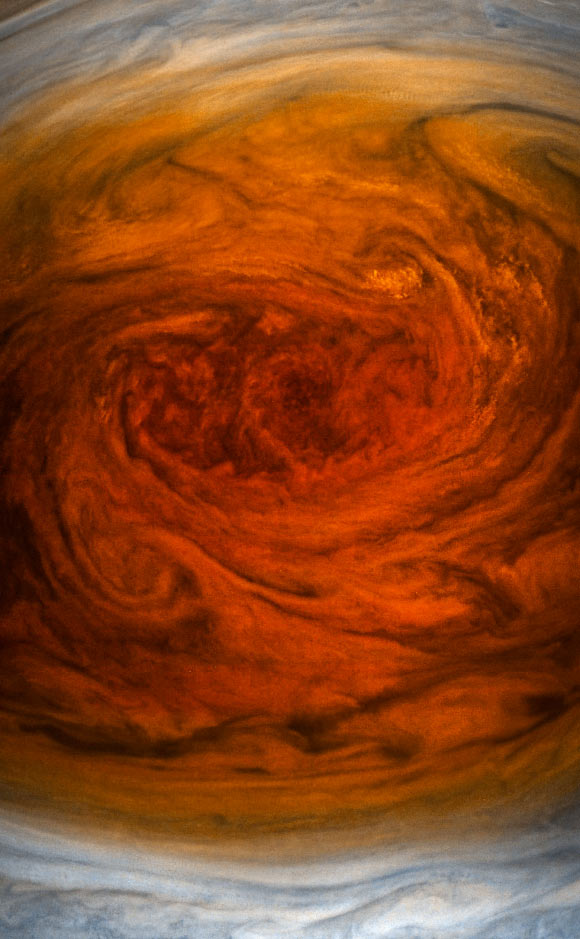
This enhanced-color image of Jupiter’s Great Red Spot was created by citizen scientists Gerald Eichstaedt and Sean Doran using data from the JunoCam imager on NASA’s Juno spacecraft. The image was taken on July 10, 2017, as Juno performed its seventh close flyby of Jupiter. Image credit: NASA / SwRI / MSSS / Gerald Eichstaedt / Sean Doran.
Jupiter’s most famous feature — the spinning, cyclone-like storm known as the Great Red Spot — has been monitored since 1830 and has possibly existed for more than 350 years.
Measuring in at 10,159 miles (16,350 km) in width, the storm is 1.3 times as wide as Earth. In modern times, it has appeared to be shrinking.
Its reddish color is likely a product of chemicals being broken apart by solar UV light in the gas giant’s upper atmosphere.
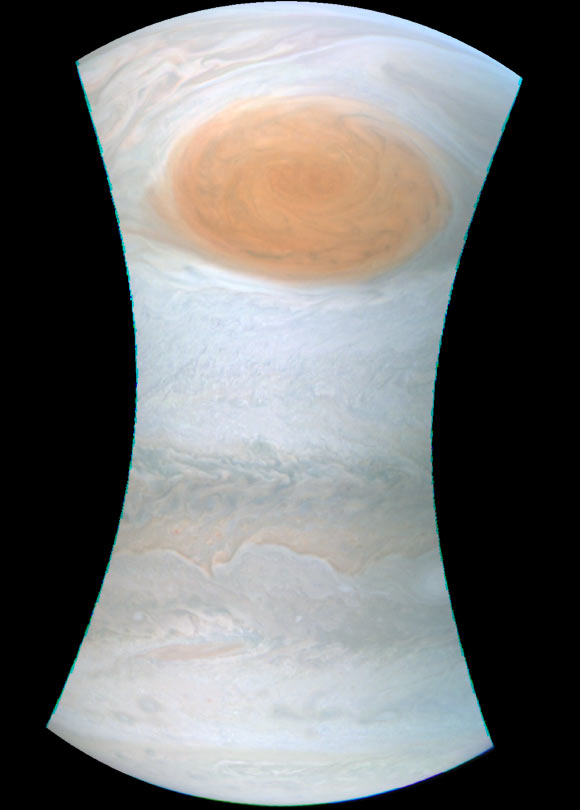
This image of the Great Red Spot was taken on July 10, 2017, as Juno performed its seventh close flyby of Jupiter. At the time the image was taken, the spacecraft was 8,648 miles (13,917 km) from the tops of the clouds of the planet. Image credit: NASA / SwRI / MSSS.
The sharpest, clearest images ever of the Great Red Spot reveal a tangle of dark, veinous clouds weaving their way through a massive crimson oval.
These views were captured by NASA’s Juno orbiter during a close flyby of Jupiter on July 10, 2017.
All of these images were taken using the spacecraft’s JunoCam instrument.
“For generations people from all over the world and all walks of life have marveled over the Great Red Spot,” said Juno principal investigator Dr. Scott Bolton, of the Southwest Research Institute.
“Now we have the best pictures ever of this iconic storm. It will take us some time to analyze all the data from not only JunoCam, but Juno’s eight science instruments, to shed some new light on the past, present and future of the Great Red Spot.”
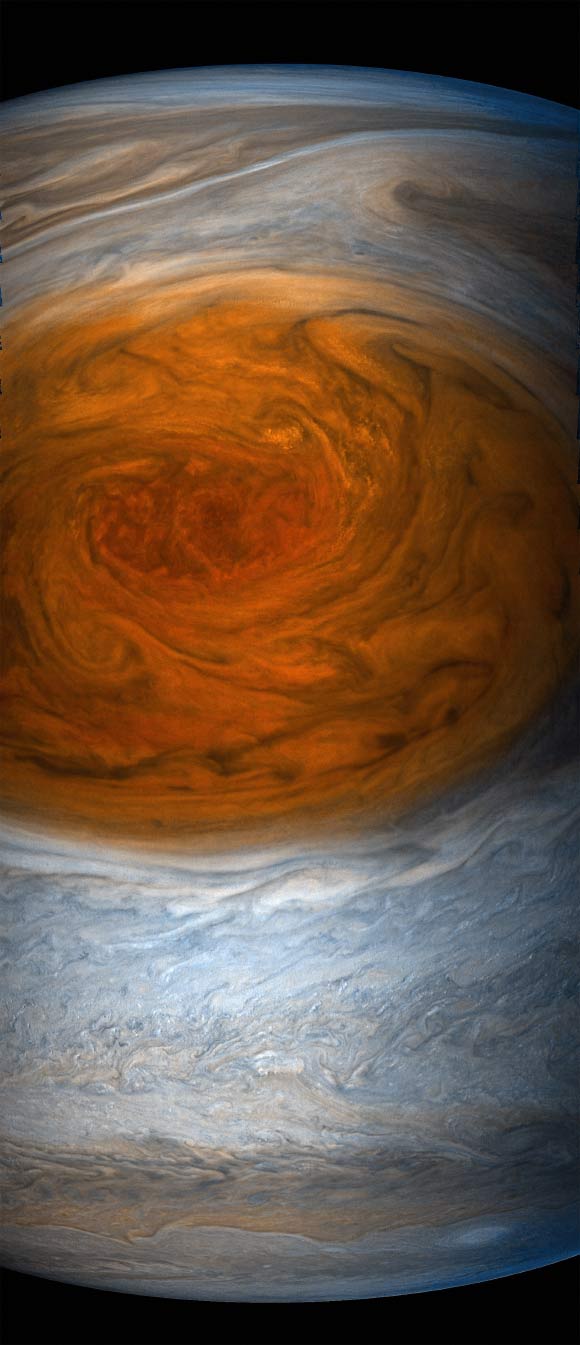
This enhanced-color image of the Great Red Spot was created by citizen scientists Gerald Eichstaedt and Sean Doran using data from the JunoCam imager on NASA’s Juno spacecraft. Image credit: NASA / SwRI / MSSS / Gerald Eichstaedt / Sean Doran.
Juno reached perijove (close passage) on July 10 at 9:55 p.m. EDT (6:55 p.m. PDT).
At the time of perijove, the spacecraft was about 2,200 miles (3,500 km) above the planet’s cloud tops.
Eleven minutes and 33 seconds later, Juno had covered another 24,713 miles (39,771 km), and was passing directly above the Great Red Spot.
The robotic orbiter passed about 5,600 miles (9,000 km) above the clouds of this iconic feature.
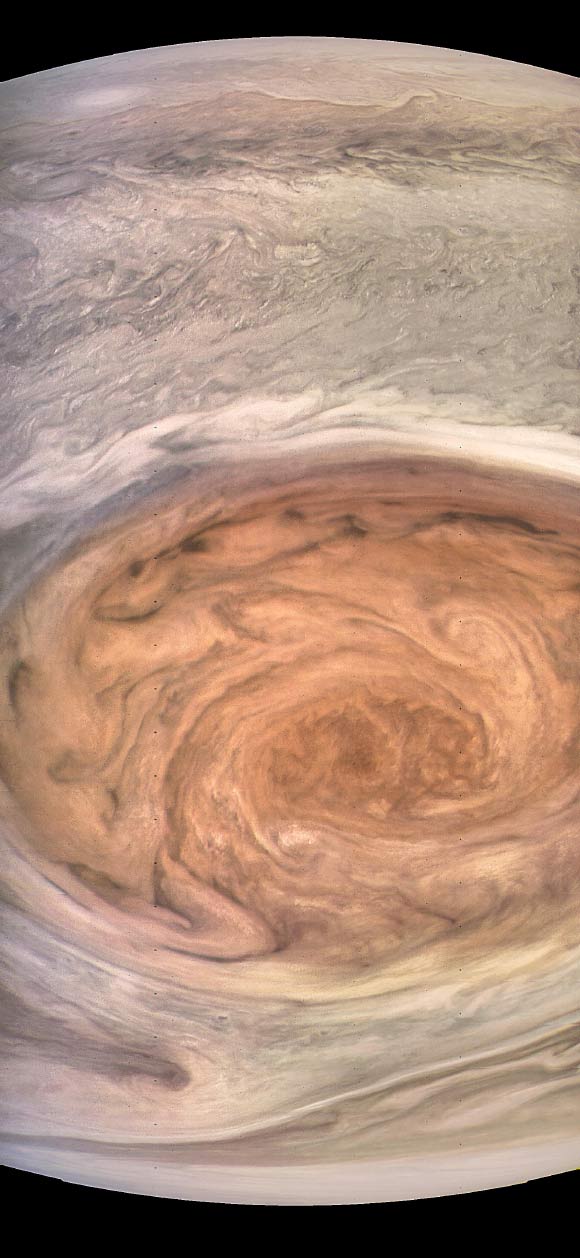
This enhanced-color image of the Great Red Spot was created by citizen scientist Kevin Gill using data from the JunoCam imager on NASA’s Juno spacecraft. At the time the image was taken, the spacecraft was about 6,130 miles (9,866 km) from the tops of the clouds of the planet. Image credit: NASA / JPL-Caltech / SwRI / MSSS / Kevin Gill.
“These highly-anticipated images of Jupiter’s Great Red Spot are the ‘perfect storm’ of art and science,” said Dr. Jim Green, NASA’s director of planetary science.
“With data from Voyager, Galileo, New Horizons, Hubble and now Juno, we have a better understanding of the composition and evolution of this iconic feature.”
“We are pleased to share the beauty and excitement of space science with everyone.”
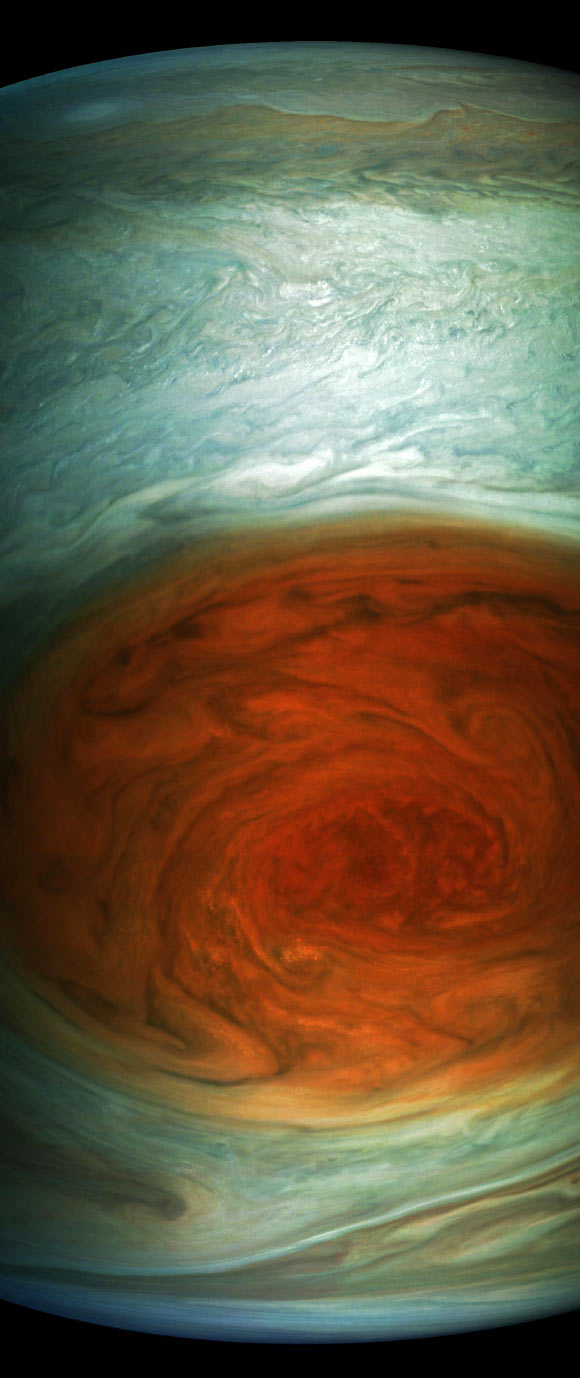
This enhanced-color image of the Great Red Spot was created by citizen scientist Gerald Eichstaedt using data from the JunoCam imager on NASA’s Juno spacecraft. The image is approximately illumination adjusted and strongly enhanced to draw viewers’ eyes to the iconic storm and the turbulence around it. At the time the image was taken, the spacecraft was about 6,130 miles (9,866 km) from the tops of the clouds of the planet. Image credit: NASA / JPL-Caltech / SwRI / MSSS / Gerald Eichstaedt.
On July 4, 2017, at 10:30 p.m. EDT (7:30 p.m. PDT), Juno logged exactly one year in Jupiter orbit, marking 71 million miles (114.5 million km) of travel around the gas giant.
Juno’s next close flyby of the planet will occur on September 1, 2017.







